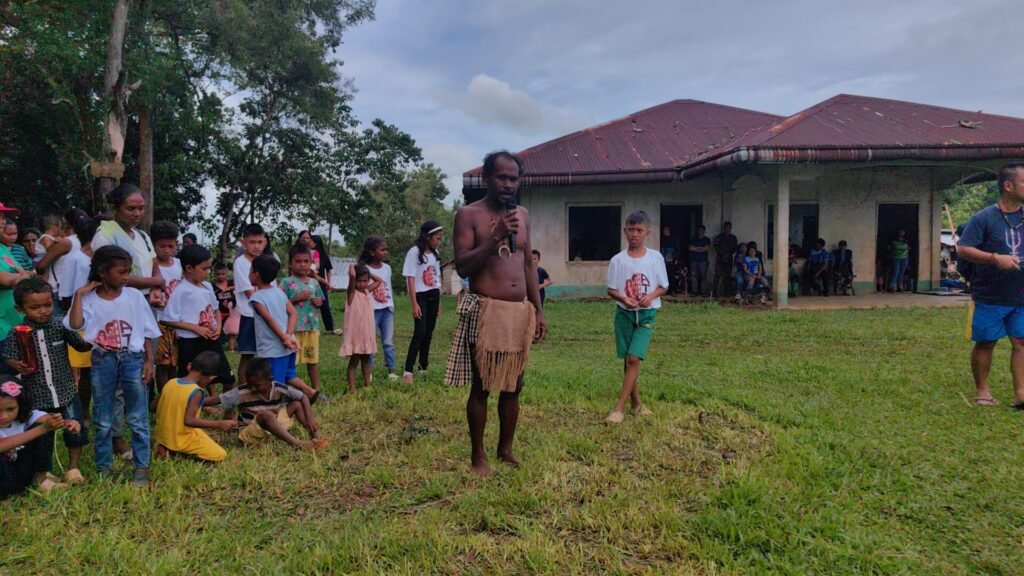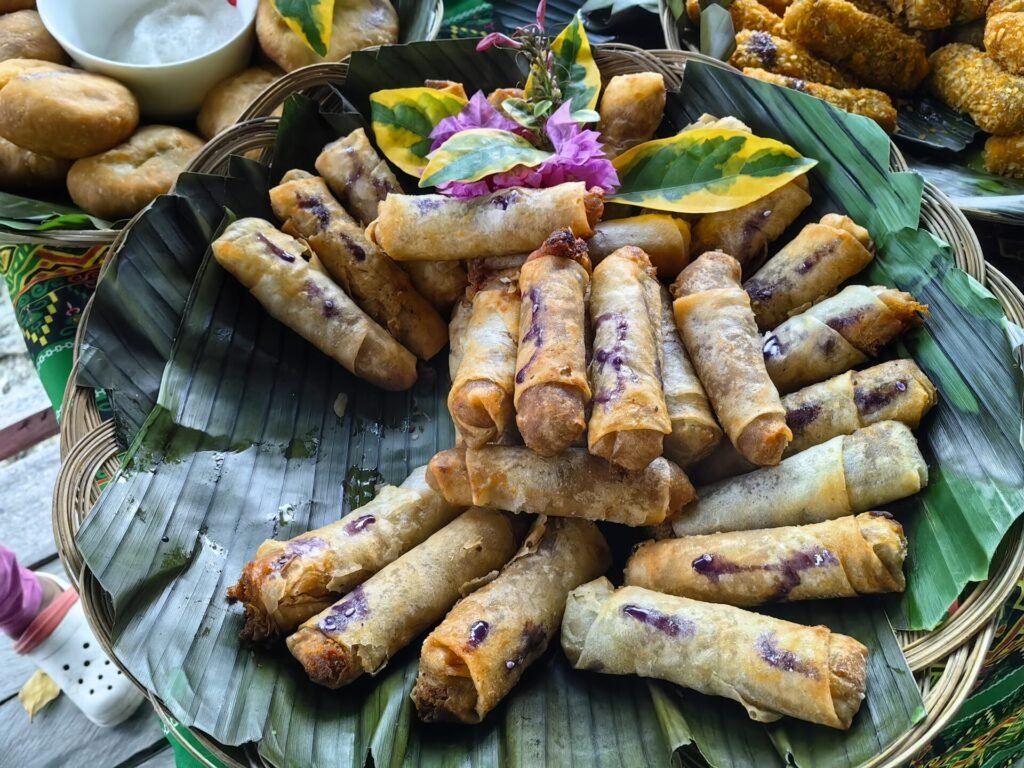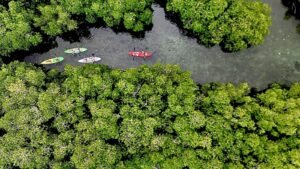
Sagay City, occupying an ice cream cone-shaped portion in the northern part of Negros Occidental province, has redefined tourism with its community-based approach.
A notable highlight is the Sagay Marine Reserve, the largest marine reserve in the Philippines, encompassing 32,000 hectares. Established in 1999, this protected area includes the famous 200-hectare Carbin Reef, an ever-changing tongue-shaped white sandbar surrounded by clear waters teeming with marine life, making it a popular destination for snorkeling and beach activities.
By fostering harmony between locals, nature, and culture, Sagay City offers experiences that transcend conventional travel. Here’s why Sagay City should top your travel list and how you can explore this exceptional destination.
Top Reasons to Explore Sagay City’s Community-Based Tourism Sites

A Transformation of Purpose
This is my favorite conservation narrative as of writing. Once home to poachers and dynamite fishers, the story of Carbin Reef has emerged as a marine conservation leader. The city’s iconic Carbin Reef, a marine sanctuary surrounded by crystal-clear waters, is evidence to five decades of environmental stewardship. Enjoy snorkeling, island dining, and beachcombing while marveling at the fisherfolk’s dedication to sustainability.
During our visit, the Tourism and Information Office of Sagay specially prepared the sandbar as a platform to showcase Enting’s Special Kiniliaw through Sir Mark, second-generation owner. We had live demonstrations of the dish and enjoyed other fresh seafood specials, plus lechon by the sea!
A Multi-awarded CBT Destination

Suyac Island Mangrove Forest Eco-park thrives as a beacon of resilience and eco-tourism. Its mangroves, flying foxes, and aquatic life are protected and celebrated by 750 residents. The eco-park is fully managed by the 43-member Suyac Island Eco-Park Tourist Attendant Association (SIETAAS). Visitors can explore the mangroves, observe bats in their natural habitat, and interact with a community that now serves as a model for sustainable tourism.
The mangrove island has also received international accolades that certainly speak to the success of their sustainable tourism model like among the Top 100 Green Destinations during the Internationale Tourismus Borse (ITB) 2023 Convention in Berlin, and receiving the award this 2025, ASEAN Community Based Tourism Award in Johor, Malaysia.
Sea Adventures and Paddling

Just a few minutes of an outrigger boat ride leads you to the seemingly secluded area surrounded by mazes of thick Mangrove Forests and sea floor teeming with rich sea grass. Docking one of the large floating huts above the gentle waters, smiles and open palms await each guest as lovely gestures. The Lapus Lapus Bulanon Conservation Area features swathes of natural barrier and beauty of the mangroves. Dressed in flamboyantly colored flowy skirts, the women excitedly served fresh seafood finds like lato, grilled fish, large scallops soup and more. To pump more adrenaline, have your Kayak guide ready and paddle together amidst the enchanting mangrove forest maze. The area is expansive and easy to get lost, hence, the trained Kayak guides assist you to manuever around. Got a nice book to read? Lounge on floating huts as the gentle breeze serenades you to bliss. There are about 30+ trained guides who joined forces to protect and conserve what they can call as home.
Heritage Pride and Artistic Flair

Sagay’s Community of Colors art initiative, found in Barangay Bougainvillia, brings lots of vibrancy and artistry to life. Hop on a colorful “sikad”, a local term for tri-wheeled manual cycles, guided by trained 12 Sikad Guide locals, who share fascinating tales of their art and heritage. It’s a unique ride blending art, history, and nature appreciation. I strongly remember Sir Richard, my assigned sikad guide, saying that majority of the residents forbid themselves from wreaking havoc in the Mangrove Forest right in their backyard as they understood its importance in their survival against inclement weather.
A Glimpse Into Indigenous Tradition

The Ata community of Barangay Puey offer an enriching encounter with their bird mimicry skills, native culinary techniques, and vibrant cultural festivals. Visitors can purchase beautifully crafted backpacks from the local weaving association while soaking in the breathtaking views of the mountain ranges. Additionally, try their native culinary offerings, like the crunchy and fresh pako salad with pineapple, gatang suso with ube, and tinolang isda. Exciting and unique as it could and you may dine using anahaw leaf bowls under the tree canopy.
Youth as Catalysts for Marine Preservation

At the Museo Sang Bata sa Negros, school-aged children serve as Junior Guides, passionately educating visitors about marine ecosystems and local history. Their enthusiasm is contagious, making this one of the city’s most inspiring stops. Museum tours gets even better as these guides explain crucial marine information easily understood by all generations. Imagine bringing your children to this museum and let them connect with their generation-mates.
Creative Energy at Margaha Beach

Fronting the Sibuyan Sea, Kape Albarako combines art, coffee, and wellness experience. Enjoy native snacks such as suman cones and large puto while immersing yourself in the creativity of Maestro Nune and the crashing waves. The black sand beach here is believed to have therapeutic benefits, adding another layer of allure to this serene escape. The cafe features a native hut-style and open balconies facing the sea.
Festivities and More Festivities

The city is also known for its Sinigayan Festival, held annually in March, celebrating the city’s heritage and the bountiful harvest from the sea. Further upland Barangay Colonia Divina celebrates its bountiful Marang harvest, thanks to the existing 4000 trees. Marang fruit has a unique flavor profile that is often described as sweet, creamy, and slightly musky. Its taste is reminiscent of a blend of jackfruit, banana, and custard, with a subtle floral undertone. The City Tourism and Information Office conducted an inventory of local festivals and did you know that different barangay celebrations are held in the city for an impressive eight months of the year? Truly, many many reasons to visit and celebrate in Sagay.
Why Choose Sagay City for Your Next Adventure?

Sagay’s community-based tourism showcases the power of locals as stewards of their environment, culture, art, craftsmanship, culinary scenes, and traditions. The destinations are not only visually stunning but also socially impactful. By visiting Sagay, travelers contribute directly to the livelihoods of its people and the preservation of its natural wonders.
Sagay City invites travelers into its world where tourism sustainability and community thrive in harmony. Come and see why Sagay is hailed as a trailblazer in community-based tourism in the Philippines. Plan and book those flights now!
Travel Guide to Sagay City
By Air: Fly to Bacolod-Silay Airport, which is about 1.5 hours away via private vehicle from Sagay City by land.
By Land: From Bacolod, buses and vans regularly ply the route to Sagay for about 2-3 hours. The ride offers scenic views of Negros Occidental’s countryside and vast sugarcane plantation. Alternatively, you can fly to Dumaguete and take a bus to Bacolod City, then another bus or van to Sagay City.
By Sea: Ferries to Bacolod from neighboring Iloilo provide another travel option for those wanting a multi-modal adventure. Additionally, Sagay Port has direct daily trips to Cebu via Tabuelan Port.



